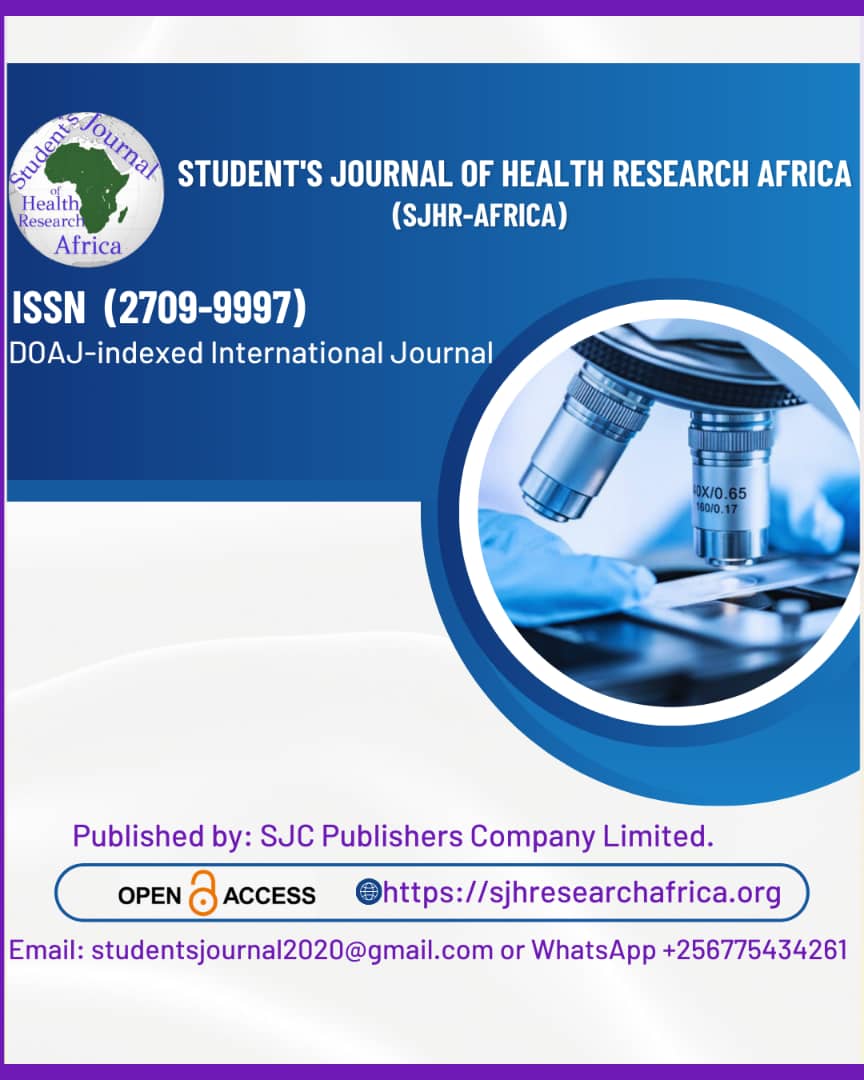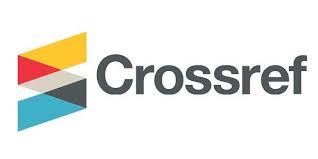A RETROSPECTIVE COHORT STUDY STATIN LIPOPHILICITY AND THE RISK OF DEVELOPING HEART FAILURE
DOI:
https://doi.org/10.51168/sjhrafrica.v5i12.1472Keywords:
Statins, Lipophilicity, Heart Failure, Cardiovascular Risk, Statin TherapyAbstract
Background
The cornerstone of the battle against cardiovascular disease is statin medication, which lowers cholesterol. In recent research, there has been considerable discussion regarding whether the lipophilicity of statin raises the risk of heart failure. Examining the relationship between incident heart failure and statin lipophilicity is the aim of this retrospective cohort investigation.
Methods
For this retrospective cohort study, electronic health records were utilized. Every participant had to be at least eighteen years old and have a history of taking statins. The two types of statins were classified as less lipophilic and highly lipophilic. Heart failure rates were assessed during the study. A statistical model accounting for confounding variables was used to compute hazard ratios and 95% Confidence Interval.
Results
Those on highly lipophilic statins had a slightly greater overall rate of heart failure (3.3 cases per 1,000 person-years) than those taking less lipophilic statins (2.5 cases per 1,000 person-years) in our study of 100 patients. The association between highly lipophilic statins and an increased risk of heart failure was not statistically significant (Hazard Ratio: 1.31, 95% CI: 0.88 - 1.95).
Conclusion
In line with earlier studies, this study highlights the complex relationship between the lipophilicity of statin and heart failure risk. Even though there was no statistically significant trend, the complex nature of the link necessitates more research in bigger, more representative cohorts.
Recommendations
Clinicians should consider the unique characteristics of each patient while prescribing statins in the absence of conclusive proof.
References
Lloyd-Jones DM, Larson MG, Leip EP, Beiser A, D'Agostino RB, Kannel WB, et al.; Framingham Heart Study. Lifetime risk for developing congestive heart failure: the Framingham Heart Study. Circulation. 2002 Dec; 106(24):3068-72. https://doi.org/10.1161/01.CIR.0000039105.49749.6F
J. A. Wong, D. Conen, J. S. Healey, and L. S. Johnson, Modifiable risk factors predict incident atrial fibrillation and heart failure, Open Heart, 2020; 7:1 https://doi.org/10.1136/openhrt-2019-001092
Robertson J, McElduff P, Pearson SA, Henry DA, Inder KJ, Attia JR. The health services burden of heart failure: an analysis using linked population health data-sets. BMC Health Serv Res. 2012 Apr;12(1):103 https://doi.org/10.1186/1472-6963-12-103
Bocchi EA, Arias A, Verdejo H, Diez M, Gómez E, Castro P; Interamerican Society of Cardiology. The reality of heart failure in Latin America. J Am Coll Cardiol. 2013 Sep; 62(11):949-58 https://doi.org/10.1016/j.jacc.2013.06.013
Siswanto BB, Radi B, Kalim H, et al. Acute decompensated heart failure in 5 hospitals in Indonesia. CVD Prev Contr. 2010;5:35-8. https://doi.org/10.1016/j.cvdpc.2010.03.005
Go AS, Lee WY, Yang J, Lo JC, Gurwitz JH. Statin therapy and risks for death and hospitalization in chronic heart failure. JAMA. 2006 Nov;296(17):2105-11. https://doi.org/10.1001/jama.296.17.2105
Kjekshus J, Apetrei E, Barrios V, Böhm M, Cleland JG, Cornel JH, et al.; CORONA Group. Rosuvastatin in older patients with systolic heart failure. N Engl J Med. 2007 Nov; 357(22):2248-61. https://doi.org/10.1056/NEJMoa0706201
Preiss D, Campbell RT, Murray HM, et al. The effect of statin therapy on heart failure events: a collaborative meta-analysis of unpublished data from major randomized trials. Eur Heart J. 2015;36:1536-46. https://doi.org/10.1093/eurheartj/ehv072
Mason RP, Walter MF, Day CA, Jacob RF. Intermolecular differences of 3-hydroxy3-methylglutaryl coenzyme A reductase inhibitors contribute to distinct pharmacologic and pleiotropic actions. Am J Cardiol. 2005 Sep;96(5 5A):11F-23F. https://doi.org/10.1016/j.amjcard.2005.06.008
Schachter M. Chemical, pharmacokinetic and pharmacodynamic properties of statins: an update. Fundam Clin Pharmacol. 2005 Feb; 19(1):117-25. https://doi.org/10.1111/j.1472-8206.2004.00299.x
Squire, Measurement of circulating natriuretic peptides to identify community‐based patients at risk of incident heart failure - should we? European Journal of Heart Failure, 2019; 21(4): 460-461. https://doi.org/10.1002/ejhf.1391
H. K. Gaggin and A. Abboud, Prediction of incident heart failure, JACC: Heart Failure, 2020; 8(5): 412-414. https://doi.org/10.1016/j.jchf.2020.01.005
D. L. Mann, Incident heart failure in chronic inflammatory diseases, JACC: Heart Failure, 2020; 8(6): 499-500. https://doi.org/10.1016/j.jchf.2020.02.006
R. Globus et al., Statin intensity and risk for cardiovascular events after Heart Transplantation, ESC Heart Failure, 2020; 7(5): 2074-2081. https://doi.org/10.1002/ehf2.12784
M. Zuin, G. Rigatelli, L. Roncon, G. Pasquetto, and C. Bilato, Risk of incident heart failure after COVID-19 recovery: A systematic review and meta-analysis, Heart Failure Reviews, 2022; 28(4): 859-864. https://doi.org/10.1007/s10741-022-10292-0
T. Imran, A. Wong, S. Schneeweiss, and R. J. Desai, Statin lipophilicity and the risk of incident heart failure, Cardiology, 2020; 145(6): 375-383. https://doi.org/10.1159/000506003
M. Kou et al., Degree of Joint Risk Factor Control and incident heart failure in hypertensive patients, JACC: Heart Failure, 2023; 11(6): 678-688. https://doi.org/10.1016/j.jchf.2023.01.006
N. Cauwenberghs, F. Haddad, and T. Kuznetsova, Association of subclinical heart maladaptation with the pooled cohort equations to prevent heart failure risk score for incident heart failure, JAMA Cardiology, 2021; 6(2): 214. https://doi.org/10.1001/jamacardio.2020.5599
Y. Kim, J. Choi, S. G. Kim, and N. H. Kim, Relative contributions of statin intensity, achieved low-density lipoprotein cholesterol level, and statin therapy duration to cardiovascular risk reduction in patients with type 2 diabetes: Population-based Cohort Study, Cardiovascular Diabetology, 2022; 21(1). https://doi.org/10.1186/s12933-022-01466-z
P. P. Toth and M. K. Palmer, High-risk US adults with untreated hyperlipidemia enhances: Estimated reduction in cardiovascular events with Statin Treatment, European Heart Journal, Supplement_2, 2020;41. https://doi.org/10.1093/ehjci/ehaa946.2992
Tent, Bempedoic acid benefits statin-intolerant patients at high cardiovascular risk, Medicom Conference Report ACC. 2023 https://doi.org/10.55788/88e583af
Bauersachs J, Galuppo P, Fraccarollo D, Christ M, Ertl G. Improvement of left ventricular remodeling and function by hydroxymethylglutaryl coenzyme a reductase inhibition with cerivastatin in rats with heart failure after myocardial infarction. Circulation. 2001 Aug;104(9):982-5. https://doi.org/10.1161/hc3401.095946
Xu Z, Okamoto H, Akino M, Onozuka H, Matsui Y, Tsutsui H. Pravastatin attenuates left ventricular remodeling and diastolic dysfunction in angiotensin II-induced hypertensive mice. J Cardiovasc Pharmacol. 2008 Jan; 51(1):62-70. https://doi.org/10.1097/FJC.0b013e31815bb629
A, D'Agostino RB, Kannel WB, et al.; Fram-Ingham Heart Study. The lifetime risk for developing congestive heart failure: the Framing-ham Heart Study. Circulation. 2002 Dec;106(24): 3068Mason RP, Walter MF, Day CA, Jacob RF. Intermolecular differences of 3-hydroxy3-methylglutaryl coenzyme A reductase inhibitors contribute to distinct pharmacologic and pleiotropic actions. Am J Cardiol. 2005 Sep;96(5 5A):11F-23F. https://doi.org/10.1016/j.amjcard.2005.06.008
Downloads
Published
How to Cite
Issue
Section
License
Copyright (c) 2024 Brajesh Kumar Singh

This work is licensed under a Creative Commons Attribution-NonCommercial-NoDerivatives 4.0 International License.





















